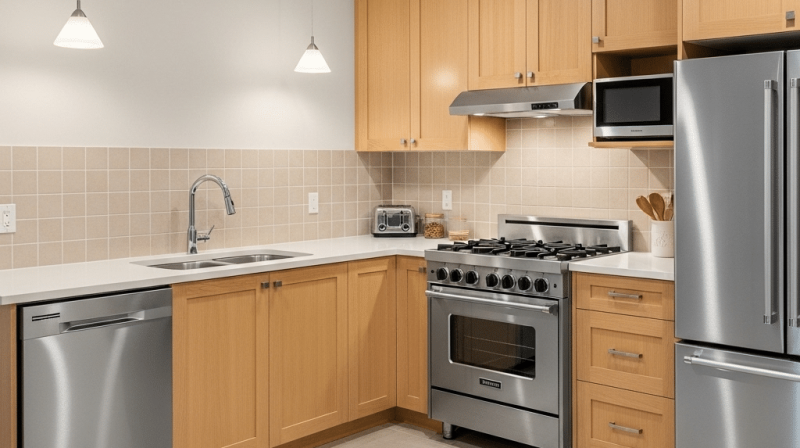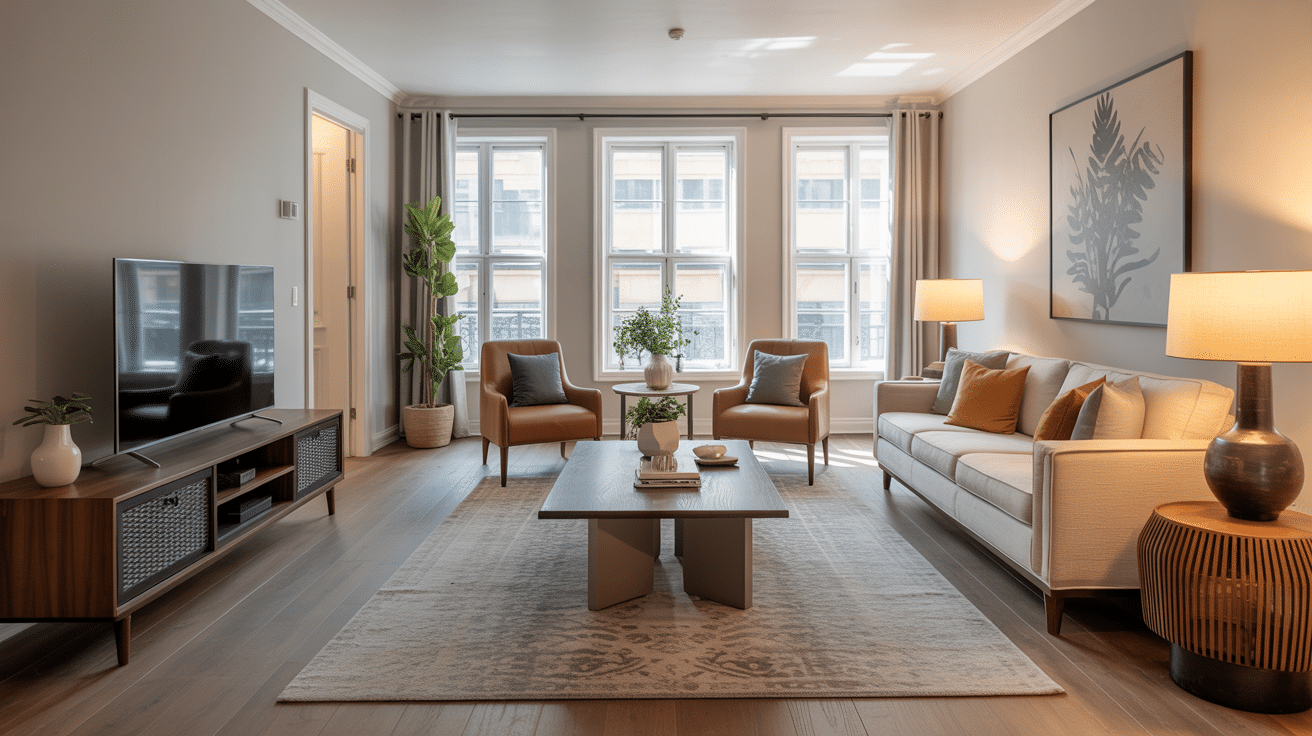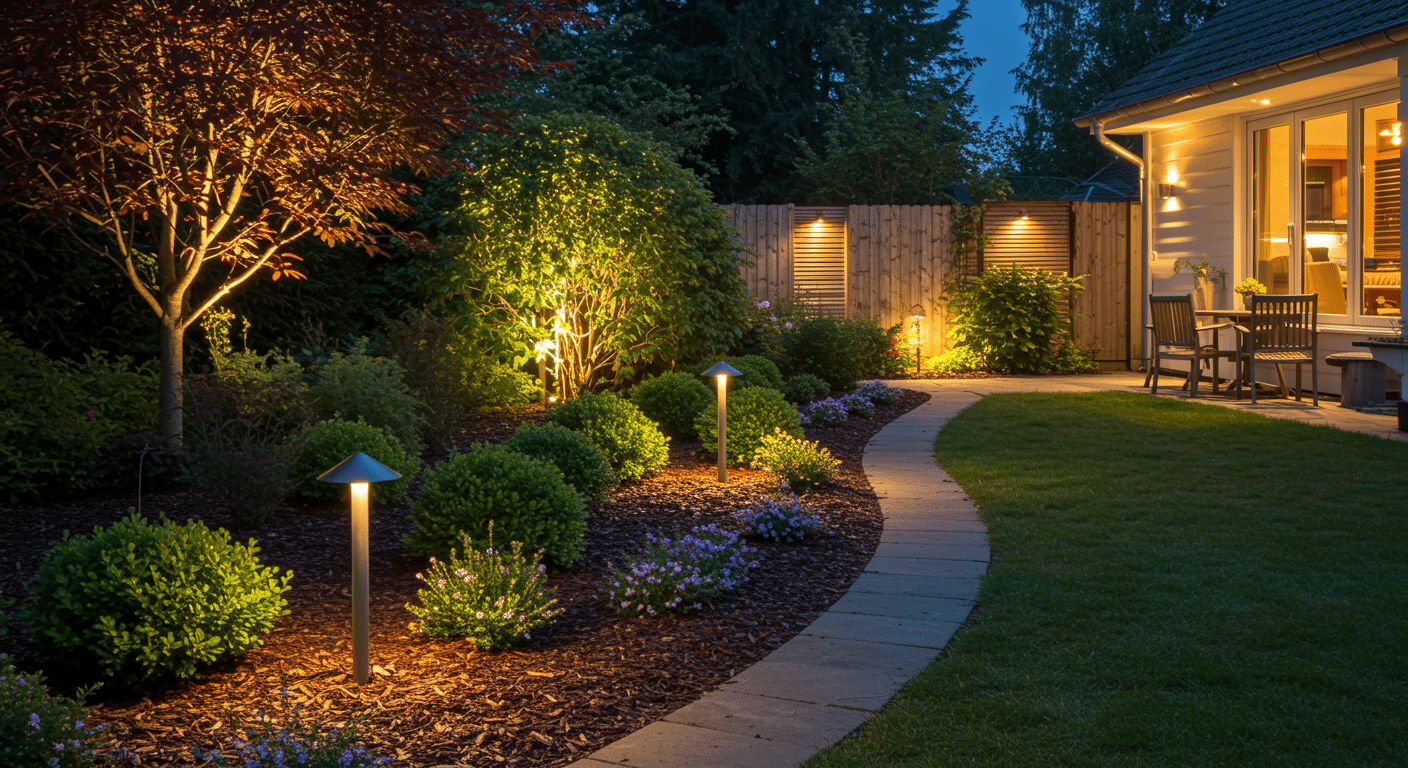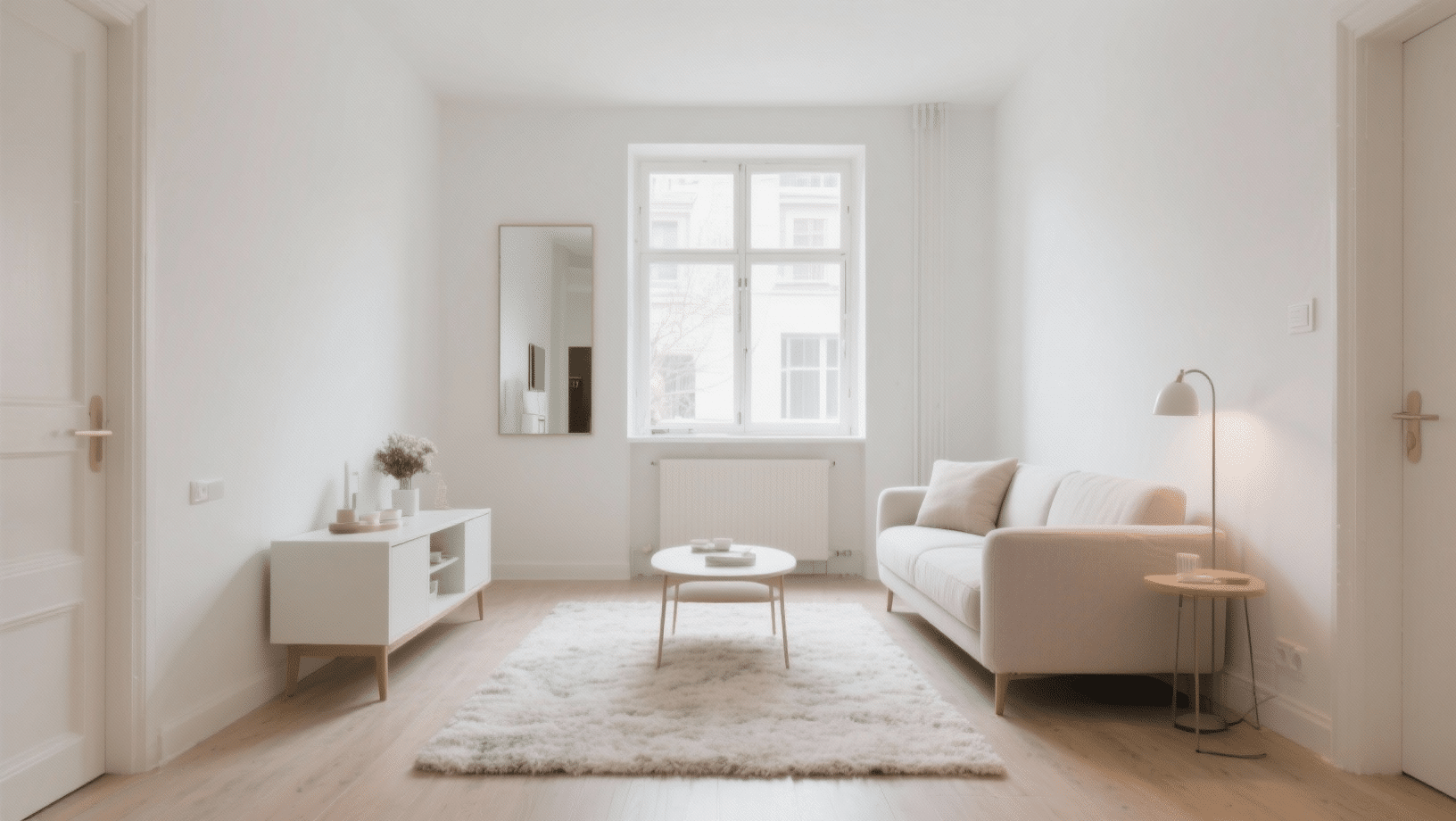Kitchen renovations are hitting record highs, with homeowners spending more than ever before.
But here’s what most people don’t realize, the 10×10 kitchen size has become the gold standard for cost estimates across the industry.
I’m going to show you exactly how much you should expect to spend, what factors will impact your budget, and smart ways to save money without compromising quality.
By the end of this guide, you’ll have a clear roadmap for planning your kitchen remodel and avoiding costly surprises.
What Does a 10×10 Kitchen Include?
When I first heard about 10×10 kitchen pricing, I was confused. What exactly does this measurement mean?
Let me break it down for you. A 10×10 kitchen is simply 10 feet wide by 10 feet long. That gives you 100 square feet of floor space to work with.
Why This Size Matters
I’ve found that most contractors and designers use this size as their pricing benchmark. And there’s a good reason for it. This compact space is large enough to fit all your essential kitchen elements, yet small enough to work in most homes.
What Fits in a 10×10 Kitchen?
In my experience, a standard 10×10 layout typically includes:
- 12 linear feet of cabinets (upper and lower combined)
- One sink with surrounding counter space
- Standard appliances – refrigerator, range, and dishwasher
- About 25 square feet of countertop surface
- Basic lighting and electrical outlets
The Layout Reality
Here’s what I want you to understand. You’re not getting a huge gourmet kitchen here. But you are getting a functional cooking space that handles daily meal prep without feeling cramped.
The beauty of this size is its efficiency. Everything stays within easy reach, and you don’t waste steps moving around. Plus, it fits the footprint of most average American homes built in the last 50 years.
Think of it as your kitchen’s “sweet spot” – not too big, not too small, just right for most families.
How Much Should a 10×10 Kitchen Remodel Cost? Key Cost Drivers
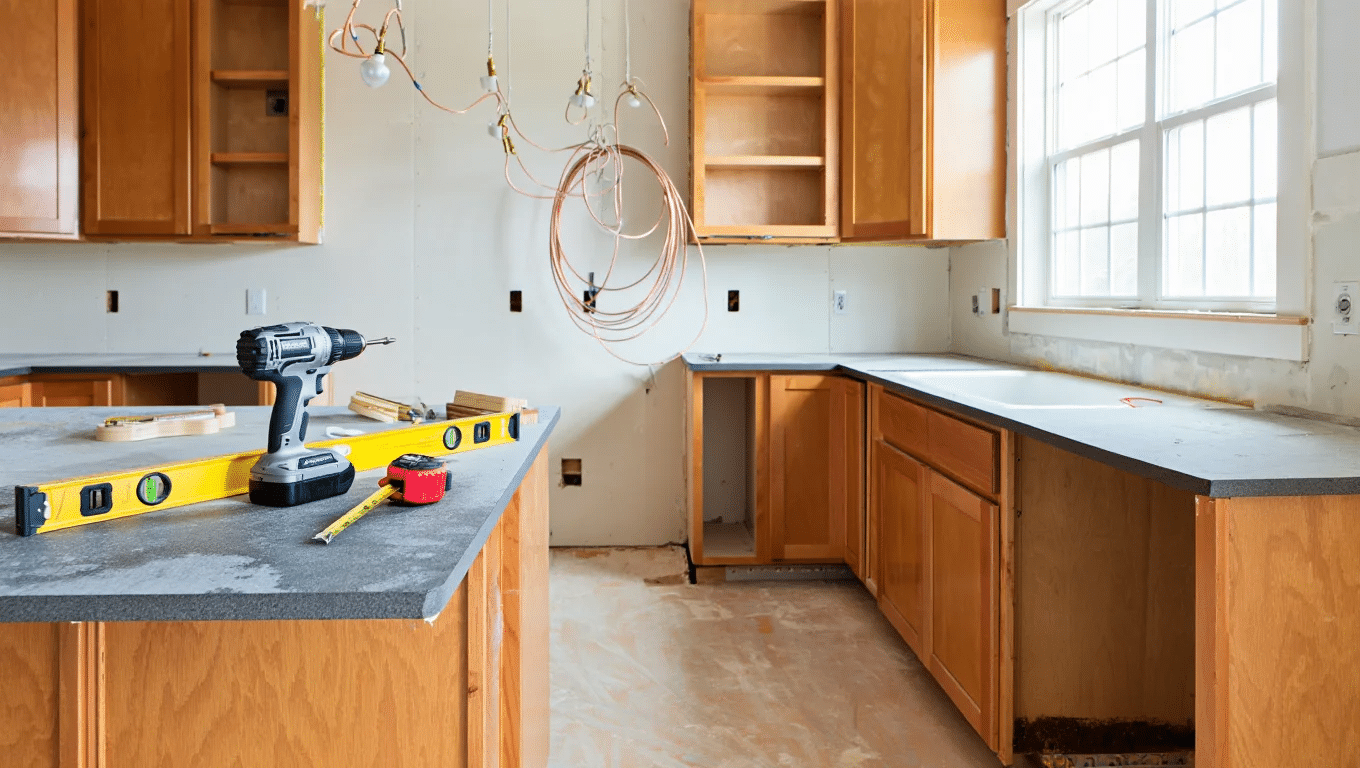
What’s the Average Cost of a 10×10 Kitchen Remodel?
Let me give you the straight answer first. Based on what I’ve seen in the market, you’re looking at an average of $24,000 for a complete 10×10 kitchen remodel.
But here’s the thing – that number can swing wildly depending on your choices.
Average Cost Breakdown
| Budget Level | Cost Range | What You Get |
|---|---|---|
| Budget Remodel | $15,000 – $20,000 | Stock cabinets, laminate counters, basic appliances |
| Mid-Range Remodel | $20,000 – $35,000 | Semi-custom cabinets, quartz counters, quality appliances |
| High-End Remodel | $35,000 – $50,000+ | Custom cabinets, premium materials, luxury appliances |
What Factors Affect the Final Price?
I’ve learned that these five main factors will make or break your budget. Let me walk you through each one.
Cabinet Choices Make the Biggest Impact: Your cabinet decision alone can swing your budget by $18,000.
Here’s what I mean:
- Stock cabinets cost me $2,000 to $5,000. They’re pre-made and ready to install.
- Semi-custom cabinets run $5,000 to $12,000. You get more style options but pay more.
- Custom cabinets hit $10,000 to $20,000. They’re built exactly for your space.
Countertop Materials Set Your Style: I’ve seen clients spend anywhere from $1,000 to over $10,000 just on countertops:
- Laminate keeps costs low at $1,000 to $2,500
- Quartz and granite hit the middle ground at $3,000 to $7,000
- Marble goes luxury at $5,000 to $10,000 or more
Appliance Upgrades Add Up Fast: Your appliance package can triple your costs:
- Basic package starts around $2,000 to $5,000
- Mid-range options cost $5,000 to $7,000
- High-end brands reach $7,000 to $10,000 and beyond
Labor Rates Vary by Location: I’ve found that where you live matters. A lot. Labor costs typically run $3,000 to $8,000 for most areas. But if you’re in a major city, expect to pay much more.
Hidden Costs in Plumbing and Electrical: This is where surprises happen. Moving a sink or adding outlets isn’t cheap. Structural changes can add thousands to your budget without warning.
The key is planning for the unexpected. I always tell people to budget an extra 15-20% for surprises.
How to Save Without Sacrificing Style
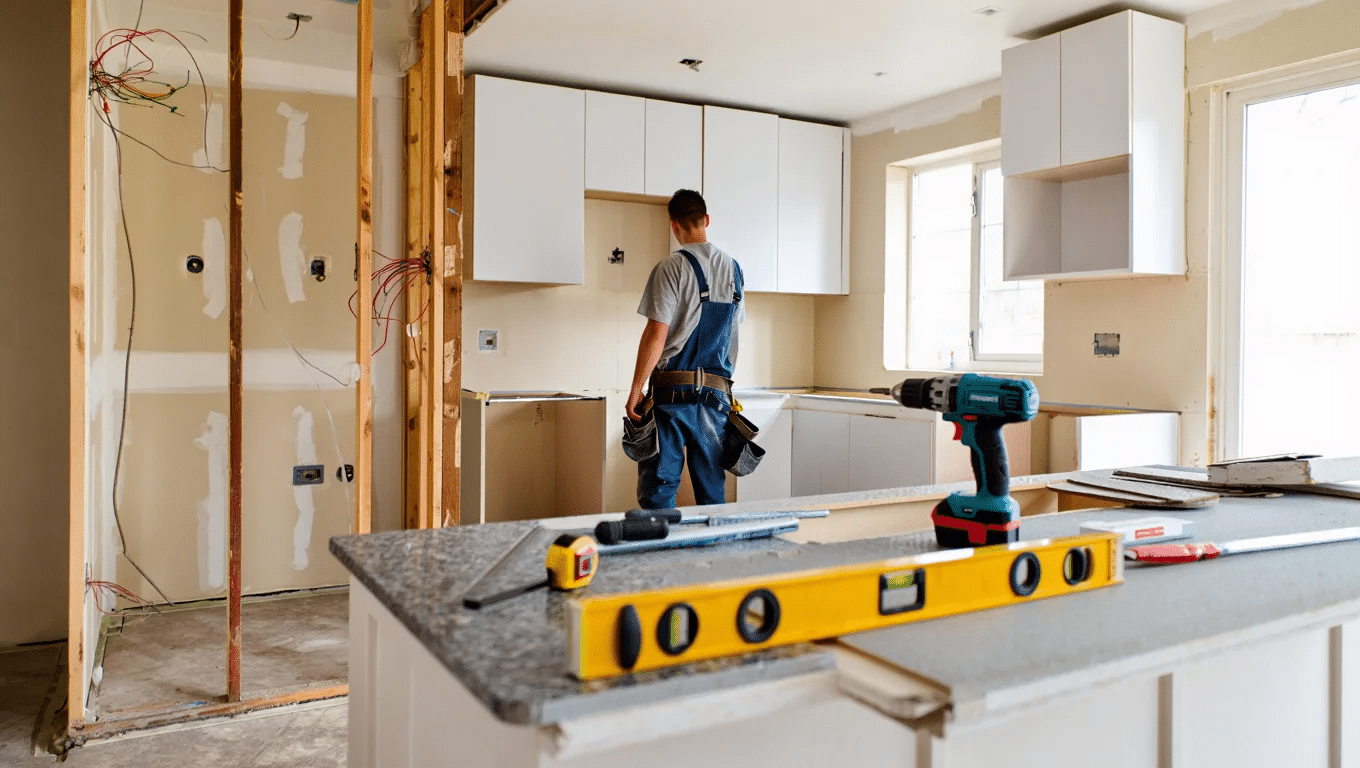
I’ve helped people cut their kitchen costs by thousands without making their space look cheap. Here are my proven strategies that actually work.
Reface vs. Replace Cabinets
This is the biggest money-saver I know. Instead of ripping out perfectly good cabinet boxes, just give them a makeover.
Cabinet refacing costs around $4,000 to $9,000. Full replacement runs $8,000 to $20,000. You’re looking at 50% savings right there.
Here’s what refacing gets you:
- New doors and drawer fronts
- Fresh hardware and hinges
- Updated cabinet face frames
- Same storage, totally different look
Mix High and Low Materials
I call this the “splurge and save” method. Spend big on what people see and touch most. Go budget on hidden spots.
My proven formula:
- Splurge on countertops, they’re your kitchen’s jewelry
- Save on flooring, choose quality vinyl that looks like hardwood
- Splurge on cabinet fronts, people notice these immediately
- Save on backsplash, subway tile looks great and costs less
One client spent $4,000 on gorgeous quartz counters but saved $2,000 with luxury vinyl flooring. The kitchen looked like it cost twice as much.
Use Standard Sizes and Layouts
Custom anything costs extra. Stick with standard measurements and you’ll save big.
- Standard cabinet sizes are cheapest.
- Standard appliance openings avoid expensive modifications.
- Simple layouts need less labor.
I always tell clients: work with your existing plumbing and electrical if possible. Moving a sink costs $500 to $1,500. Moving gas lines? Even more.
Consider Second-Hand or Outlet Appliances
Don’t overlook scratch-and-dent stores or last year’s models. I’ve found clients amazing deals this way.
Where to look:
- Appliance outlets – last year’s models at 30% off
- Scratch-and-dent stores – minor cosmetic issues, major savings
- Floor models – showroom pieces at reduced prices
- Online marketplaces – barely used appliances from people who moved
One family got a $3,000 refrigerator for $1,800 because it had a tiny dent on the side. Once installed, you couldn’t even see it.
Time Your Remodel During Off-Season
Timing is everything. I’ve seen people save 15-20% just by starting at the right time.
Remodel Timing Strategy Table
| When to Start | Cost Impact | Why It Works | Potential Savings |
|---|---|---|---|
| November – February | Best Rates | Contractors need work during slow season | 15-20% savings |
| Mid-Week Scheduling | Lower Costs | Better contractor availability, less rushed | 5-10% savings |
| After Major Holidays | Good Rates | Less competition for skilled workers | 10-15% savings |
| Spring (March-May) | Highest Costs | Peak remodel season, high demand | 15-20% markup |
| Right Before Holidays | Premium Pricing | Rushed timelines, overtime labor costs | 20-30% markup |
| Summer (June-August) | Peak Pricing | Everyone wants work done, limited availability | 15-25% markup |
Wrap Up
Now you know exactly how much should a 10×10 kitchen remodel cost – anywhere from $15,000 to $50,000, with most people spending around $24,000. That investment adds real value to your home and daily life.
The key is smart planning. Prioritize what matters most to you, whether that’s custom cabinets or high-end appliances. Don’t rush into decisions.
Here’s what I want you to do next: get at least three detailed quotes from licensed contractors. Compare not just prices, but quality and timelines too.
Armed with this knowledge, you’ll make choices that fit both your budget and your dreams.


